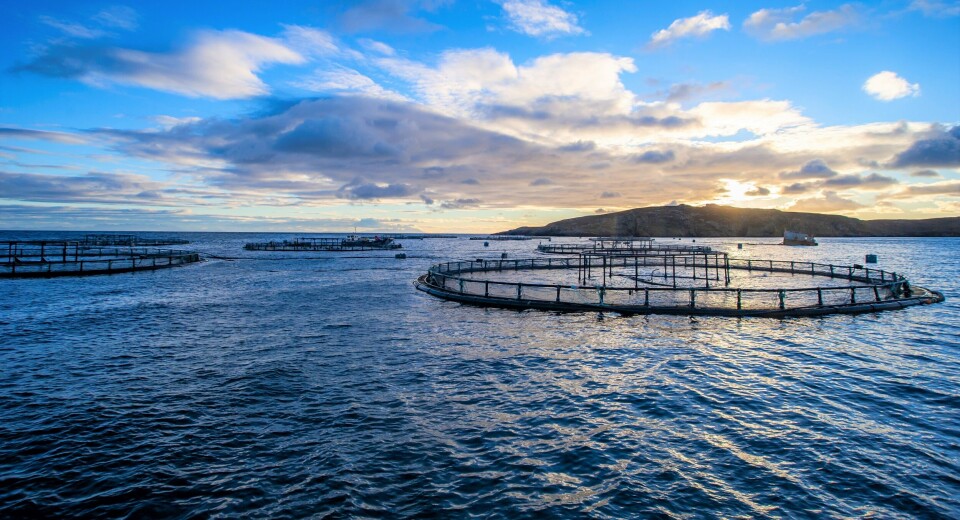
Fish farmers pour cold water on ‘warming seas’ fish deaths claim
Sunday paper’s salmon splash was wrong to suggest that there was a significant increase in mortalities at sea, says trade body
Scotland’s salmon farmers have challenged a newspaper’s claim that there was a massive increase in mortalities in May compared to the same month last year.
The front-page story in Scotland on Sunday was based on the latest mortality figures published by the Scottish Government’s Fish Health Inspectorate (FHI), which the newspaper said had “revealed an explosion in the number of fish which died before harvest, with a tenfold increase this May compared to a year earlier and the previous month’s total”. It linked the apparent increase to warming seas.
But trade body Salmon Scotland pointed out that the FHI figures only include mortalities above a reporting threshold agreed with the industry (see panel, below right). Its own mortality figures, which encompass all fish that die on marine farms, show that monthly mortality in May 2023 was 1.37%, compared to 1.06% in May 2022.
One reason for Scotland on Sunday’s “tenfold increase” claim
is that it has included mortalities in hatcheries when adding up the number of
fish deaths reported to the FHI in May 2023. These make up more than 80% of the
2.5 million fish deaths that the newspaper reported but did not happen at sea.
Fragile fish
Millions of salmon are hatched annually by fish farmers and the tiny, fragile fish can die quickly in large numbers if something goes wrong in their tank or they are challenged by disease. Salmon Scotland doesn’t include freshwater mortalities in its monthly figures, preferring to concentrate on fish that are known to be healthy when stocked in marine sites. FHI's list includes hatchery mortalities, marked by the letters FW, although this indicator is easy to miss on the spreadsheet that the Inspectorate uses to keep a record of fish deaths.
More than 2 million of the mortalities reported to the FHI in May 2023 were in hatcheries and were classed under the FHI category of “First feeding to 5 grams”. Some of the hatchery fish that died in May 2023 weighed as little as 0.4 grams.
No hatchery mortalities were reported in mortality figures for May last year, so including them in a year-on-year comparison distorts the picture of how salmon are performing at sea.
No heat deaths
Scotland on Sunday’s article said fears were growing over the impact of climate change on the salmon industry after the hottest June on record and an unprecedented marine heatwave during which sea temperatures were up to 5°C higher than normal.
But Dr Iain Berrill, head of technical at Salmon Scotland, said that while climate change could become an issue, the heatwave hadn’t caused an increase in fish deaths.
“Our salmon farmers will always do everything they can to provide the very best health and welfare for their fish,” said Berrill. “Monthly survival in the marine phase in May 2023 was 98.63% compared to 98.94% the same time last year. The annual comparison confirms there was no noticeable impact on survival due to seawater temperatures or anything else.
“Media reports in a weekend national newspaper were wrong to suggest that there was a significant increase in the number of salmon that died at sea in May due to ‘warming seas’.
“Climate change does, however, have the potential to pose significant issues to food producers here in Scotland and across the world. Whether on land or at sea, we are all working hard to mitigate the impacts of climate change on our animals and crops. Scottish salmon remains a highly nutritious, low carbon protein which will feed a growing global population for decades to come.”
Challenging end to 2022
Scotland on Sunday also pointed out that FHI figures showed all-time monthly highs of reportable salmon mortalities in September (2.2 million, not including hatchery fish) and December 2022, when the paper said almost 3.8m fish died. Fish Farming Expert counted a smaller figure – 3.14m mortalities, of which 1.2m occurred in hatcheries, mostly in a batch classed as “Eggs to first feed”.
The challenging end to the year is, however, reflected in Salmon Scotland’s broader monthly mortality percentages, which show industry-wide mortality of 4.65% in September, 3.66% in October, 4.64% in November, and 3.28% in December.
Salmon farmers have been investing heavily in new vessels and equipment to treat amoebic gill disease (AGD), a major contributor to mortality.
Monthly mortality figures from January to May this year have all been below 2%.






















































